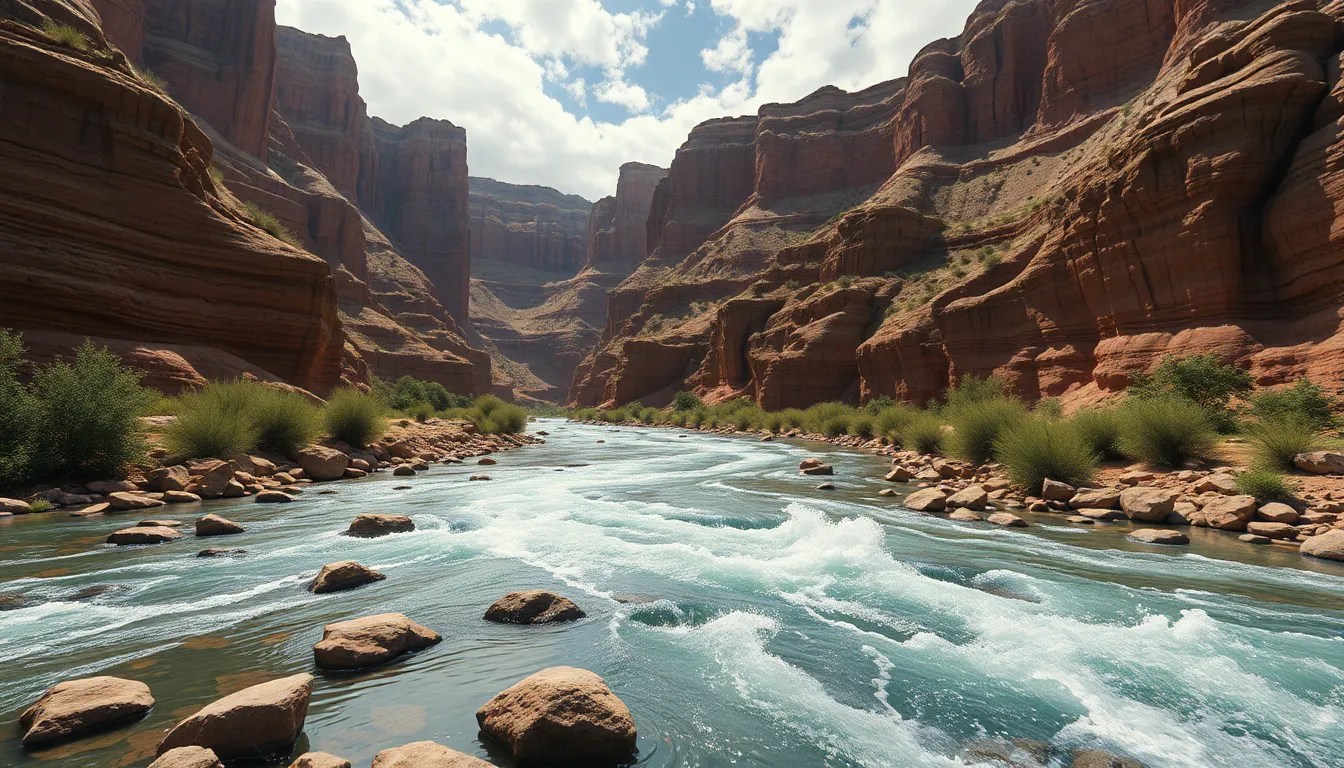Apache Legends of the River: Myths of Flow and Transformation
I. Introduction
The Apache culture, rich in tradition and history, has a profound connection with the natural world, especially rivers. For the Apache people, rivers are not just geographical features; they embody life, transformation, and the flow of existence. These waterways are central to their mythology, serving as conduits for spiritual teachings and cultural values.
Mythology plays a crucial role in Apache society, conveying morals, lessons, and insights about the human experience. Through the stories of rivers, Apache legends illustrate the interconnectedness of life and the importance of respecting nature’s forces. This article delves into the myths related to rivers and transformation, exploring how these narratives shape Apache identity and beliefs.
II. The Sacred Role of Rivers in Apache Beliefs
In Apache spirituality, rivers are revered as life-giving forces that sustain both the land and its people. They are seen as sacred entities, essential for survival and nourishment.
- Rivers as Life-Giving Forces: Water is essential for agriculture, drinking, and sustaining wildlife. The Apache people view rivers as vital sources of life.
- Symbolism of Water: Water symbolizes purity, renewal, and transformation in Apache beliefs. It is often associated with spiritual cleansing and healing.
- Cultural Practices: Rituals and ceremonies often take place near rivers, where offerings are made to honor the spirits of the water and seek their blessings.
III. Creation Myths Involving Rivers
Creation myths form the backbone of Apache spirituality, with rivers playing a central role in the emergence of the world as known today.
- The Emergence of Rivers: Many Apache creation stories describe how rivers were formed from the tears of deities or the actions of mythical beings, signifying the emotional depth of creation.
- Key Deities: Important figures such as the Water Man and the Earth Woman are often depicted as nurturing the rivers, highlighting their role in transformation and life.
- Shaping the World: The interplay between land and river is fundamental, as rivers carve paths through the earth, creating valleys and ecosystems while facilitating life.
IV. Legends of Transformation: Human and Nature
Apache myths often include themes of transformation, where individuals undergo significant changes through their encounters with rivers.
- Transformed by Encounters: Stories abound of individuals who, after crossing a river, emerge changed—becoming wiser, stronger, or more attuned to the spiritual world.
- River Spirits: River spirits are believed to influence human fate, guiding or challenging individuals based on their respect for nature.
- Personal Growth: These transformations often serve as metaphors for personal growth and the importance of adaptability in the face of life’s challenges.
V. The River as a Journey: Lessons from Apache Legends
The river metaphorically represents life’s journey, teaching valuable lessons through its currents and flows.
- Life’s Journey: Just as a river flows through various terrains, individuals encounter diverse experiences that shape their paths.
- Key Narratives: Legends often feature protagonists who face obstacles similar to navigating rapids or whirlpools, illustrating resilience and determination.
- Moral Lessons: These narratives impart essential morals, such as the importance of community, respect for nature, and the acceptance of change.
VI. Symbolic Flora and Fauna: The River’s Companions
The rivers in Apache myths are accompanied by a rich array of flora and fauna, each symbolizing different aspects of life and interconnectedness.
- Animals: Species such as otters, fish, and birds are often featured in myths, representing agility, wisdom, and the cycle of life.
- Plants: The presence of willows and cottonwoods is significant, as they provide shelter and sustenance, symbolizing nurturing and protection.
- Interconnectedness: The Apache worldview emphasizes that all beings are interconnected, with rivers serving as vital arteries of life linking humans, animals, and plants.
VII. Contemporary Interpretations of Apache River Legends
Modern Apache communities continue to honor their river myths, ensuring these stories remain vibrant and relevant.
- Honoring Myths: Contemporary rituals often incorporate elements of these legends, fostering a sense of identity and continuity among the Apache people.
- Storytelling: Oral traditions persist as a means of preserving cultural heritage, with elders passing down stories to younger generations.
- Influence on Art and Literature: Apache river legends inspire various forms of artistic expression, influencing literature, visual arts, and educational programs.
VIII. Conclusion
In conclusion, rivers hold a sacred place in Apache mythology, symbolizing life, transformation, and the journey of existence. The stories woven around these waterways reflect timeless truths about human experience and our relationship with nature.
Apache legends not only entertain but also educate, imparting lessons that resonate across generations. As we explore these narratives, we are reminded of the significance of rivers in both the physical and spiritual realms, encouraging a deeper understanding of Apache culture and the wisdom embedded within these ancient tales.
We invite you to further explore the richness of Apache mythology and its continuing relevance in today’s world.



